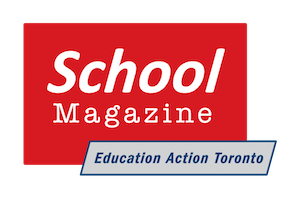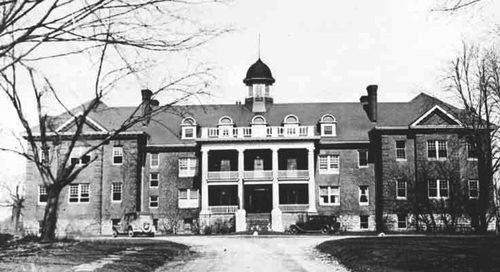Ford Nation vs First Nations: Cancelling the Truth and Reconciliation Summer Writing Team
Before public events in schools and elsewhere today, there is an acknowledgement of the Indigenous people living in the area thousands of years before Europeans arrived. It’s quite specific.
In Toronto for instance, the meeting chair refers to the “ancestral traditional territories of the Ojibway, the Anishnaabe and, in particular, the Mississaugas of the New Credit whose territory we are gathering on today.” She goes on to recognize the “historic importance” of the contributions of Indigenous people and to “make the promise and the challenge of Truth and Reconciliation real in our communities.”
This can never redress what has taken place and continues to happen to Indigenous Peoples of this country. But for educators, parents and communities, it’s an acknowledgement of history and our responsibility to tell it properly, without varnishing over sections we’d prefer not to address or dismissing the perspective of First Nations people in history as just not relevant.
It’s worth looking more closely at that promise to make the findings of the Truth and Reconciliation Commission (TRC) “real” in our communities. The TRC was created in 2008 to enable former students of the so-called “Indian Residential Schools” tell what happened to them. It was set up to create an accurate history of what went on in these places. It was also meant to guide healing both of the people and those near them affected by the residential schools. From this process of learning the truth might come reconciliation in the relationship between Indigenous Peoples and the country they inhabited first.

Since 2013 when the TRC’s ninety-four Calls to Action were published, there has been more effort in schools to go beyond recognition to actually do something about it. Call to Action 62 calls on the provincial government to consult with Indigenous Peoples to create curriculum for K-12. The Wynne government in 2016 set out to revise the curriculum in elementary and secondary schools to include Indigenous histories, perspectives and realities. This would reflect more depth and accuracy than some of the mythology we once learned.
By last April, the Ministry had put out curriculum revisions for Social Studies (grades 4 to 6); History and Geography (grades 7-8) Canada and World Studies (grades 9-10) and Co-operative Education (grades 11-12):
For elementary schools, they included topics like contrasts in kinds of settlement between the Wendat and Anishnaabe, or how the Metis were different from other First Nations people, giving topics the same importance as those we used to study about the European explorers. They called on teachers to have their kids investigate relationships between the environment, daily life and organization of First Nations societies. Similar questions about roles of people, adaptation and economics in different communities are woven throughout the curriculum in every grade. It’s a good integrated course of study that combines how to find and organize information with what students are supposed to know.
And for those of us who spent hours memorizing key figures and events of New France, British North America and the development of Canada, those topics are still there but some background is beginning to show through. Along with the details of Confederation for instance, comes the question “Why did the residential school system meet with growing resistance from Indigenous families during this period? What happened when some parents resisted the removal of their children?” or “What are some ways in which the educational experiences of First Nations people during this period were similar to and different from those of First Nations People today?” Some truth to flesh out the history.
As Ontario Regional Chief Isadore Day has said “With reconciliation you need truth. Part of the education effort is to actually get to the bottom of the real history between the Crown and Indigenous people.”
This summer Indigenous educators and elders were supposed to meet for two weeks in Toronto to take part in the next phase of writing new curriculum for grades 1 to 3 along with grade 9 Geography, grade 10 Civics and some Grade 11 and 12 courses. The Friday before they were set to begin their work, they were told to stay home, that the sessions were cancelled. The Ministry of Education bureaucrat who wrote to tell them said members could still submit expenses – provided they attached receipts. Thoughtful.
Of course, it wasn’t the Ford government’s fault. Minister of Education Lisa Thompson, blamed it on the bureaucrats in the Ministry who went ahead without her say-so and listened to Doug Ford. He’d gone on about “efficiencies” all through the provincial election and they took him seriously.
But Thompson didn’t reinstate the meetings. She just said the Ministry would work with experts, elders and Indigenous communities to develop materials. She didn’t say when. The latest from her office is pretty much the same thing as the beginning of July: “We look forward to ongoing engagement with experts, Elders and Indigenous communities across Ontario. We will have more to say on this process in the near future.”
Shy-Anne Hovorka, an Indigenous educator and musician travelled from Nipigon to take part in the project, but had to turn around and go home once she learned of the Ministry’s shift into reverse. “I was very excited to be part of this curriculum writing project as it’s an important part of bringing historical and current First Nations, Metis and Inuit perspectives into our schools,” she told School Magazine, adding that there is still a will out there to continue the work of the team, though it would take resources to bring it together.
Colinda Clyne is an Anishnaabe teacher and Curriculum Lead for First Nations, Metis and Inuit Education in Ontario’s Upper Grand District School Board (UGDSB). She has been asking the Minister for a response since she first heard about the cancellation of the writing sessions in social media in July. The Minister has not responded. In the meantime, Clyne says that people working in Indigenous education will keep helping educators incorporate this material with their teaching.
The Ford government is good at one thing – sending indirect messages to its supporters. Reverting to the 1998 sexual education curriculum made its anti-abortion, homophobic supporters happy. Is the dog-whistle here announcing that this government really doesn’t take truth and reconciliation seriously?
As Ontario teachers wait once again to see what the Ford Ministry of Education has in store for them, we have a modern example of the government arrogance that prompted the writers of the Truth and Reconciliation report to say: “Reconciliation requires that a new vision, on a commitment to mutual respect, be developed.”

